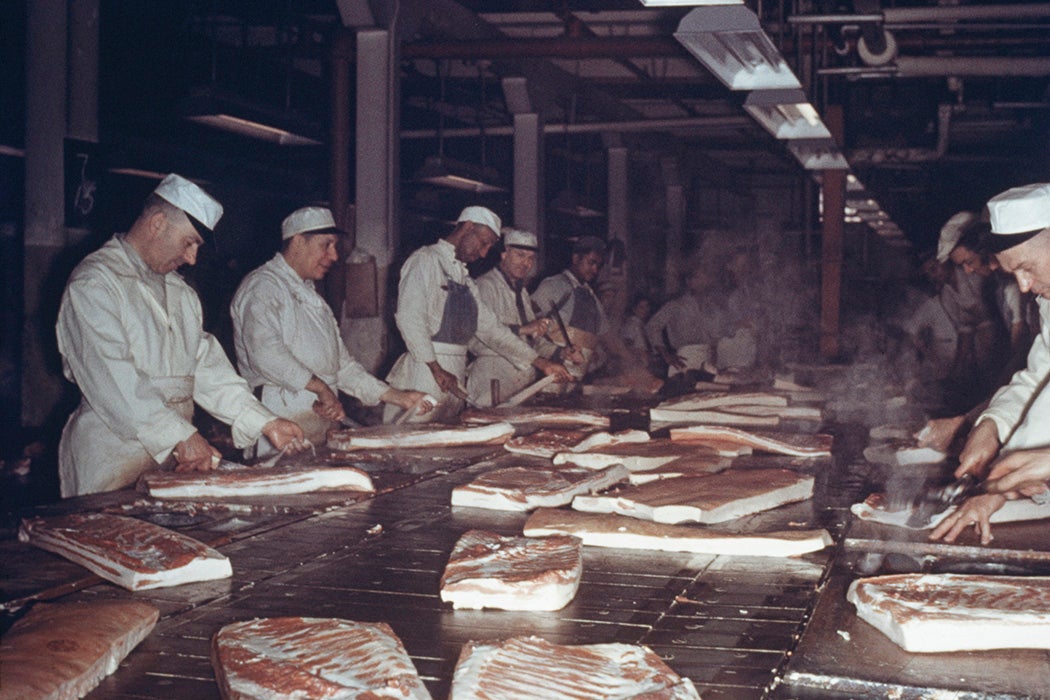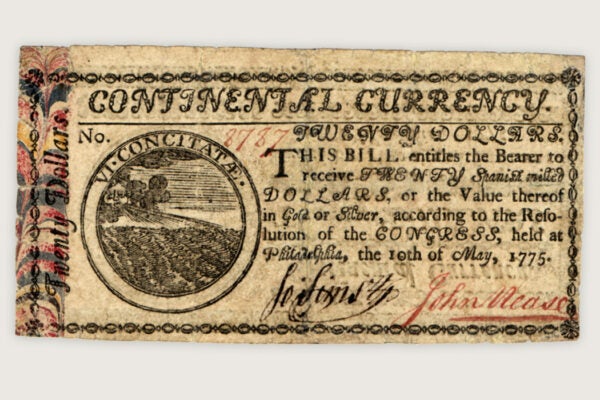Meatpacking plants have become distinct hotspots for coronavirus outbreaks, putting a spotlight on the generally awful conditions and low wages that these plants have offered workers, even before the virus. It might seem like this work—often done largely by immigrant, black, and Latinx workers with few job opportunities—is simply doomed to be bad. But, as union researcher Daniel Calamuci wrote in 2008, it wasn’t always like this.
As anyone familiar with Upton Sinclair’s muckraking novel The Jungle knows, meatpacking was also terrible work in the early twentieth century. But, Calamuci writes, that changed after World War II, thanks largely to the United Packinghouse Workers of America (UPWA), which organized the era’s dominant meatpacking companies, known as the Big Four. As a member of the relatively militant Congress of Industrial Organizations (CIO), the union embraced more strikes and bigger demands than rival union Amalgamated Meat Cutters, which was part of the more conservative American Federation of Labor (AFL).
Over the 1950s, the UPWA gained strength thanks largely to its leadership on civil rights. Where craft unions like Amalgamated gained power partly by limiting who could get a job—often along racial lines—the UPWA tried to reduce the company’s ability to divide workers by race. Significantly, Calamuci writes, the union’s interracial organizing meant the largely black workforce in slaughterhouses’ “kill room” were union members. Since those workers controlled the pace of production, that gave unions an important source of power.

By the early 1960s, 95 percent of meatpacking workers outside the South were unionized, and wages were comparable to those in auto and steel production. Between the 1960s and 1980s, the wages of meat-slaughter and -processing workers remained significantly higher than the average in nondurable manufacturing.
So why did it all go back downhill? Calamuci writes that as early as the 1960s, the industry began moving to more rural areas—a shift made possible by transporting meat in refrigerated trucks instead of trains. The Big Four lost market share to smaller companies. Both these changes hurt the UPWA, which had its power base within the big companies in big cities. It led more workers to organize with Amalgamated. The two unions merged in 1968, and in 1979 they became part of the United Food and Commercial Workers International Union (UFCW), which also represents a much larger bloc of retail workers. The UFCW adopted a less militant stance. When one of its union locals at a Hormel plant in Minnesota went on strike in 1985 to preserve its workers’ high wages, the national organization declined to support it.
Weekly Newsletter
At the same time, new production techniques reduced the skill required of slaughterhouse workers. And, in the 1990s and 2000s, meatpacking companies began aggressively recruiting Latin American immigrants, using the unequal legal status of these workers as a point of leverage.
By the time Calamuci was writing, meatpacking work had once again become far lower paid than manufacturing jobs, as it still is twelve years later.
Support JSTOR Daily! Join our new membership program on Patreon today.







